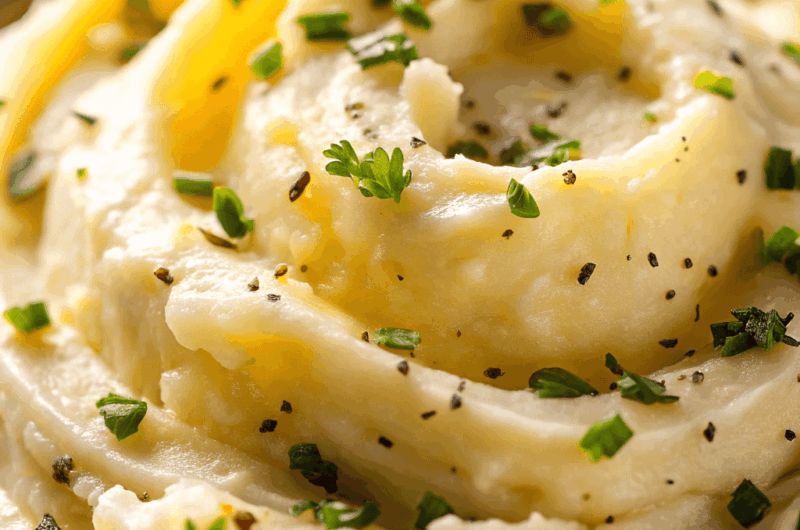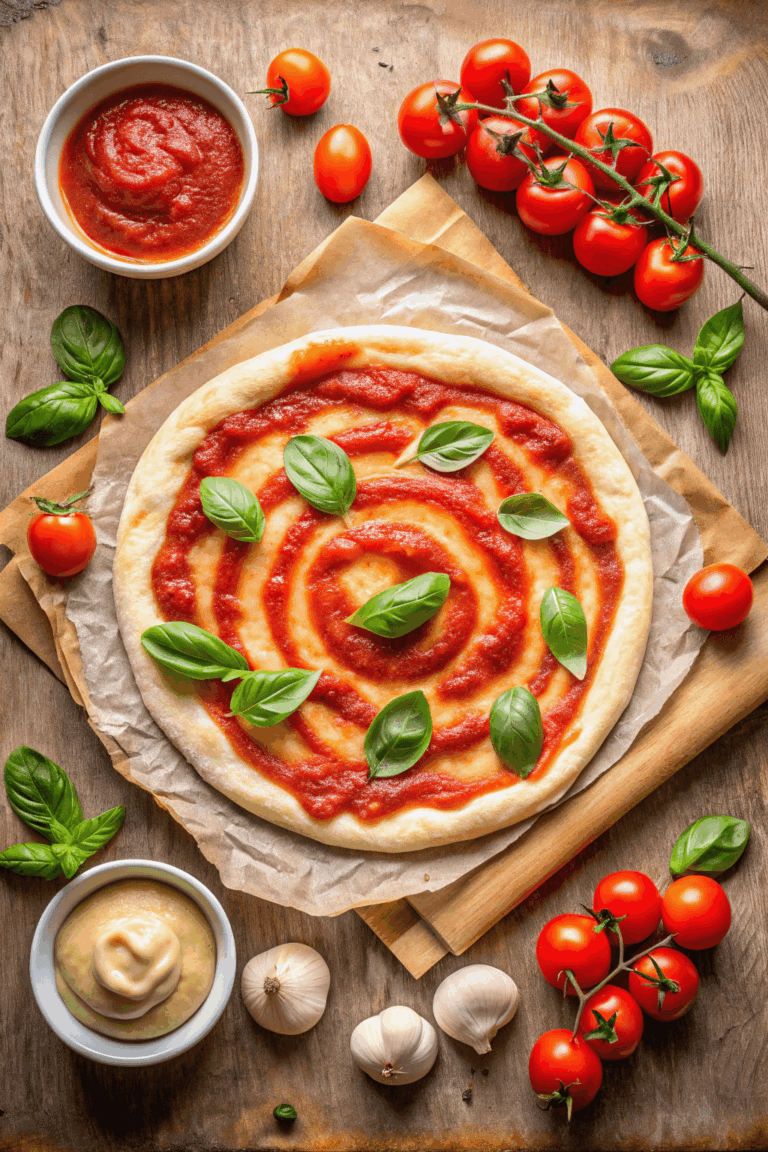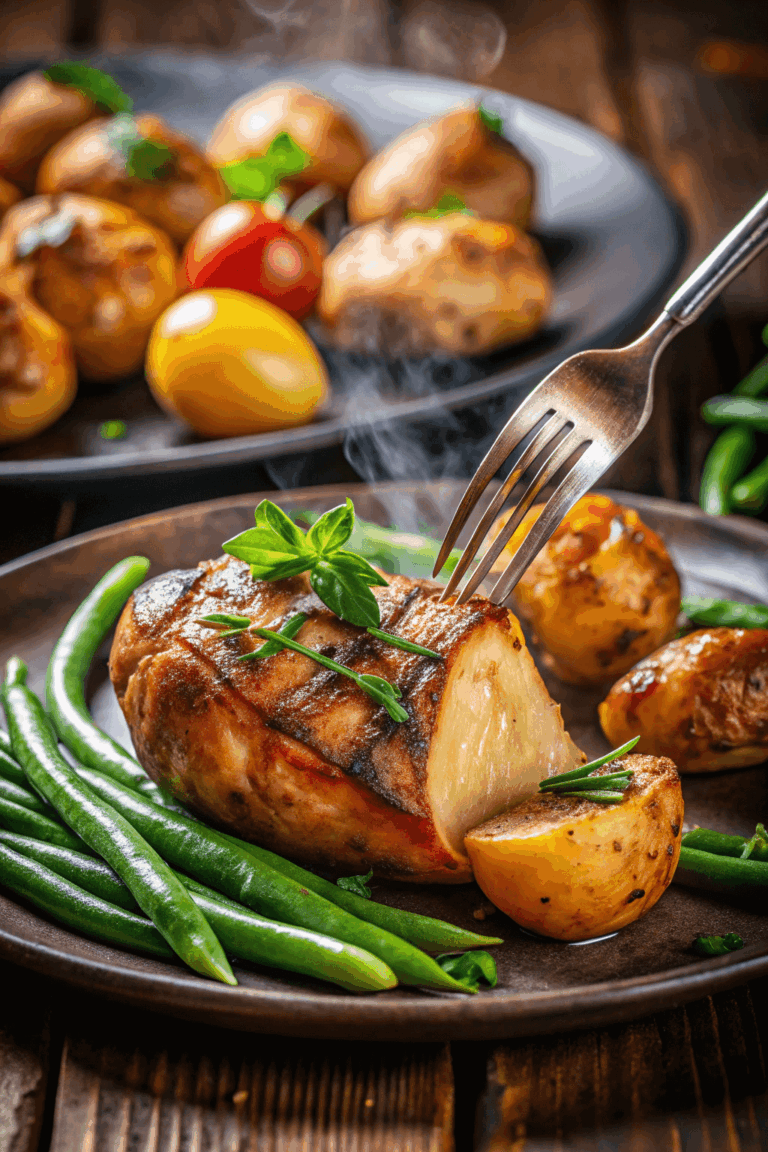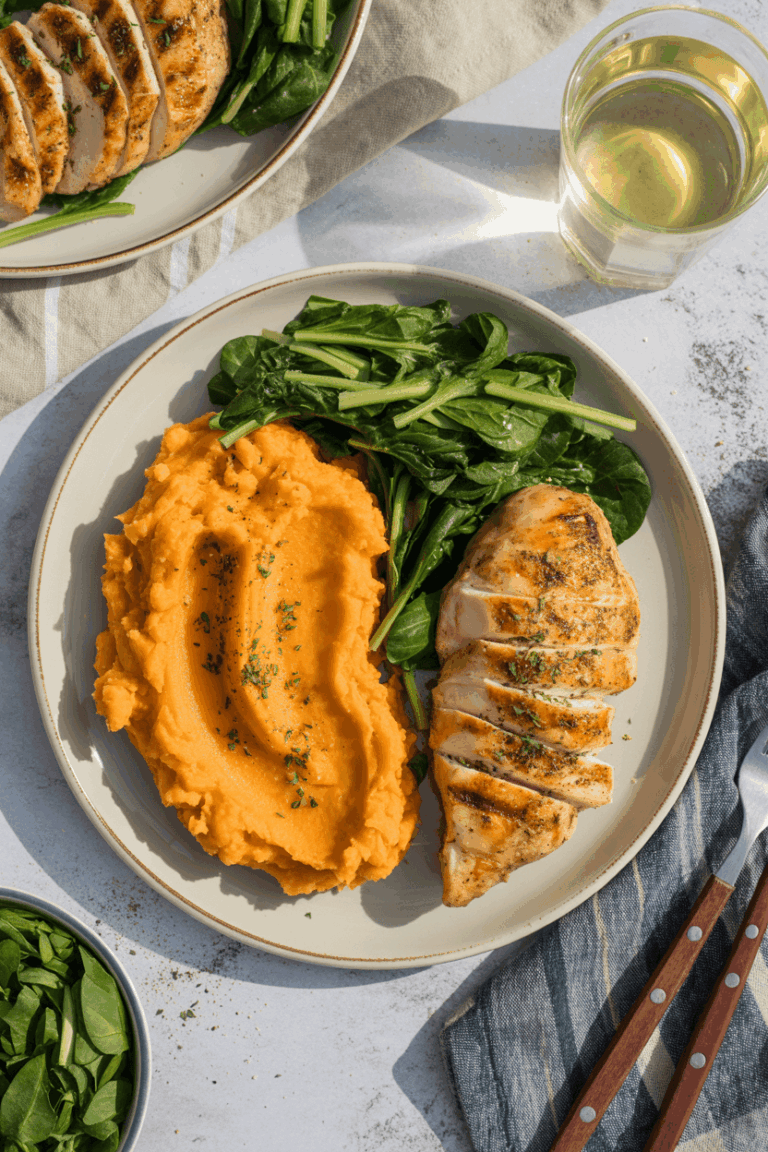The Best Fluffy Pancakes recipe you will fall in love with. Full of tips and tricks to help you make the best pancakes.
Mashed Potatoes Recipe That’ll Make You Cancel Dinner Plans
Let me tell you something—nothing, and I mean nothing, feels more like a warm hug than a big ol’ scoop of mashed potatoes. You know the kind. Creamy, dreamy, buttery mountains of fluff that practically melt on your tongue and make you question why you ever considered skipping carbs.
I used to think mashed potatoes were just a holiday thing, right? Thanksgiving, maybe Christmas if we’re feeling fancy. But nope. These bad boys deserve a spot on your plate year-round. So today, I’m giving you the lowdown on how to make mashed potatoes that are so good, you might actually cry. Or at least drool a little.
We’re talking simple ingredients, easy steps, and the kind of flavor that’ll make your mom ask you for the recipe.
Recipe Snapshot
| Category | Details |
| Yield | 4 servings |
| Serving Size | About 1 cup |
| Prep Time | 10 minutes |
| Cook Time | 20 minutes |
| Total Time | 30 minutes |
| Calories per Serving | ~250 kcal |
| Primary Cooking Method | Boiling |
Calories are approximate and may vary depending on exact ingredients used.
Mashed Potatoes Recipe
Course: Side DishCuisine: AmericanDifficulty: Easy1
cup10
minutes20
minutes250
kcalSo here we are—the mashed potatoes recipe that takes basic and turns it into banger. Whether you’re planning a holiday feast or just need a comforting sidekick for your Tuesday meatloaf, these potatoes have your back. The best part? No fancy tools, no gourmet drama. Just pure, buttery bliss.
Ingredients
2 pounds Yukon Gold or Russet potatoes, peeled and chopped into chunks
4 tablespoons unsalted butter (room temperature)
1/2 cup whole milk (warmed)
1/4 cup sour cream (optional for extra creaminess)
1 1/4 teaspoons salt (plus more for boiling water)
Freshly ground black pepper, to taste
Directions
- Prep the Potatoes
Peel and chop your potatoes into even-sized chunks. This ensures they cook at the same rate. Aim for golf ball-sized pieces—nothing too tiny or they’ll turn to mush. - Boil ‘Em Like You Mean It
Toss those chunks into a large pot and cover them with cold water. Add a generous pinch of salt (like you’re seasoning pasta water) and bring it all to a boil. Once boiling, reduce to a simmer and cook for about 15–20 minutes. They should be fork-tender—not falling apart, but soft enough to mash without a fight. - Drain and Dry
Drain the potatoes in a colander and let them sit for a couple of minutes. This helps any excess moisture evaporate. Damp potatoes = runny mash. And we’re not about that life. - Warm the Dairy
While the potatoes are drying out, warm the milk and butter together in a small saucepan over low heat. Don’t let it boil—just get it nice and warm. This helps the potatoes absorb the dairy without seizing up. Trust me, it makes a difference. - Mash Time
Return the potatoes to the pot or a large bowl. Use a potato masher for a rustic texture or a ricer if you want silky-smooth mash. Slowly pour in the warm milk and butter mixture while mashing. - Stir in the Extras
Once mashed to your desired consistency, stir in the sour cream (if using), remaining salt, and pepper. Give it a taste and adjust seasoning as needed. Want it richer? Add a pat of butter. Need a tangy kick? Toss in a bit more sour cream. Go wild. - Serve Like a Pro
Serve immediately while hot. You can garnish with chopped chives, extra butter, or even a drizzle of olive oil if you’re feeling bougie. Leftovers reheat like a dream, but fresh is where the magic lives.
Extra Tips
- Use warm dairy for smoother mash—cold milk can cause the potatoes to seize and turn gluey.
- Don’t over-mix. Once your potatoes are mashed, stir gently to keep them fluffy, not pasty.
- Want garlic mashed potatoes? Simmer a couple of garlic cloves in your milk and butter, then mash them right in.
- For ultra-smooth texture, use a potato ricer. It’s a game changer.
- Salt your boiling water generously—it’s your first layer of seasoning.
- Taste as you go. Potatoes are blank slates, so don’t be afraid to season boldly.
Equipment List
- Large pot
- Colander
- Potato masher or ricer
- Wooden spoon or silicone spatula
- Measuring cups and spoons
- Small saucepan (for warming milk and butter)
- Peeler (if not using pre-peeled potatoes)
Substitution Options
Don’t have everything on hand or working with dietary needs? No problem. There are plenty of ways to get creative without sacrificing flavor.
Yukon Gold potatoes are ideal for their naturally creamy texture, but if you only have Russet potatoes on hand, they’ll deliver that iconic fluffiness you crave. Red potatoes can work too, especially if you like a slightly chunkier texture and don’t mind the skins.
Out of butter or going dairy-free? Swap it out with vegan butter or a generous glug of olive oil. Even avocado oil adds a smooth richness without overpowering the dish.
No milk? Use almond milk, oat milk, or even some vegetable broth. Just make sure it’s warm before adding it to your mash, so everything blends smoothly.
Instead of sour cream, try Greek yogurt for a lighter tang, or go for coconut cream or plant-based alternatives if you’re avoiding dairy. Salt and pepper are staples, but if you’re low on pepper, a pinch of cayenne can step in for a little extra warmth.
These swaps aren’t just lifelines—they’re flavor adventures in disguise.
Make-Ahead Tips
Mashed potatoes might be best fresh, but that doesn’t mean you can’t plan ahead. If you’re hosting or just want to get ahead of your dinner game, make your mash earlier in the day. Once prepared, transfer them to a heat-safe bowl and cover tightly with foil. To reheat, pop the bowl over a simmering pot of water (double boiler-style), stir occasionally, and add a splash of warm milk or a pat of butter to revive the creaminess.
Alternatively, you can microwave in short bursts, stirring between rounds. Just don’t let them sit out too long uncovered or they’ll turn gummy—and we don’t do gummy potatoes around here.
Storage Instructions
Got leftovers? You’re in luck—mashed potatoes store surprisingly well. First, let them cool completely. Then scoop them into an airtight container and stash it in the fridge. They’ll stay good for 3 to 4 days.
When it’s time to reheat, the microwave is your easiest option. Cover the bowl and heat in short bursts, stirring in between until hot. You can also reheat on the stovetop over low heat, or even toss them in a slow cooker for a couple of hours on low if you’re feeding a crowd. Just remember to stir now and then, and maybe throw in a little butter or splash of milk to bring back that creamy magic.
FAQ
Can I make mashed potatoes ahead of time?
Absolutely! Mashed potatoes are super forgiving when it comes to prepping ahead. After making them, let them cool slightly and store in an airtight container. When you’re ready to serve, reheat on the stove or in the microwave with a splash of milk or a knob of butter stirred in to revive that silky texture.
What’s the best type of potato to use?
For ultra-creamy results, go with Yukon Golds—they’re naturally buttery and smooth. Russet potatoes are great too if you want something light and fluffy. Prefer a little bite and a rustic touch? Red potatoes with the skin on add extra texture and a pop of color.
How do I keep mashed potatoes from getting gluey?
Gluey mash is usually the result of over-mixing or using cold dairy. Always warm your milk and butter before adding them in, and mash gently—use a masher or ricer rather than a food processor, which can make things gummy.
Can I freeze mashed potatoes?
Yes, you totally can. Make sure to include a good amount of butter or cream—fat helps the texture stay smooth. Let them cool completely, then transfer to a freezer-safe container. Reheat slowly with added milk or butter to bring them back to life.
How long do leftovers last in the fridge?
Stored properly in an airtight container, mashed potatoes can last 3 to 4 days in the fridge. Just add a little milk or butter when reheating to freshen up the texture and taste.
Nutritional Information
Here’s a general estimate for one serving (about 1 cup) of this mashed potatoes recipe:
- Calories: ~250 kcal
- Total Fat: 12g
- Saturated Fat: 7g
- Cholesterol: 30mg
- Sodium: 450mg
- Carbohydrates: 32g
- Fiber: 3g
- Sugars: 2g
- Protein: 4g
Note: Nutritional values may vary depending on specific ingredients and measurements used.
What to Serve with Mashed Potatoes
Well, everything. Anything!
Mashed potatoes are the ultimate blank canvas—ready to be drenched in sauces, smothered in gravies, or paired with your all-time favorite mains. Whether you’re craving a rustic, hearty dinner or putting together a fancy holiday spread, this fluffy side fits right in.
Here are some classic (and absolutely drool-worthy) dishes to serve with your mash:
- Juicy steak with peppercorn sauce or classic pan drippings
- Roast chicken with crispy skin and lemony pan sauce
- Standing rib roast with garlic herb crust
- Slow-roasted pork with ridiculously crispy crackling
- Salisbury steak drowning in rich mushroom gravy
- Swedish meatballs with that creamy, dreamy gravy
- Meatloaf with tangy tomato glaze or brown gravy
- Braised short ribs or beef stew
- Sausages and onion gravy (hello, bangers and mash!)
In short, if it needs a comfort-loaded sidekick? Mashed potatoes are your go-to.
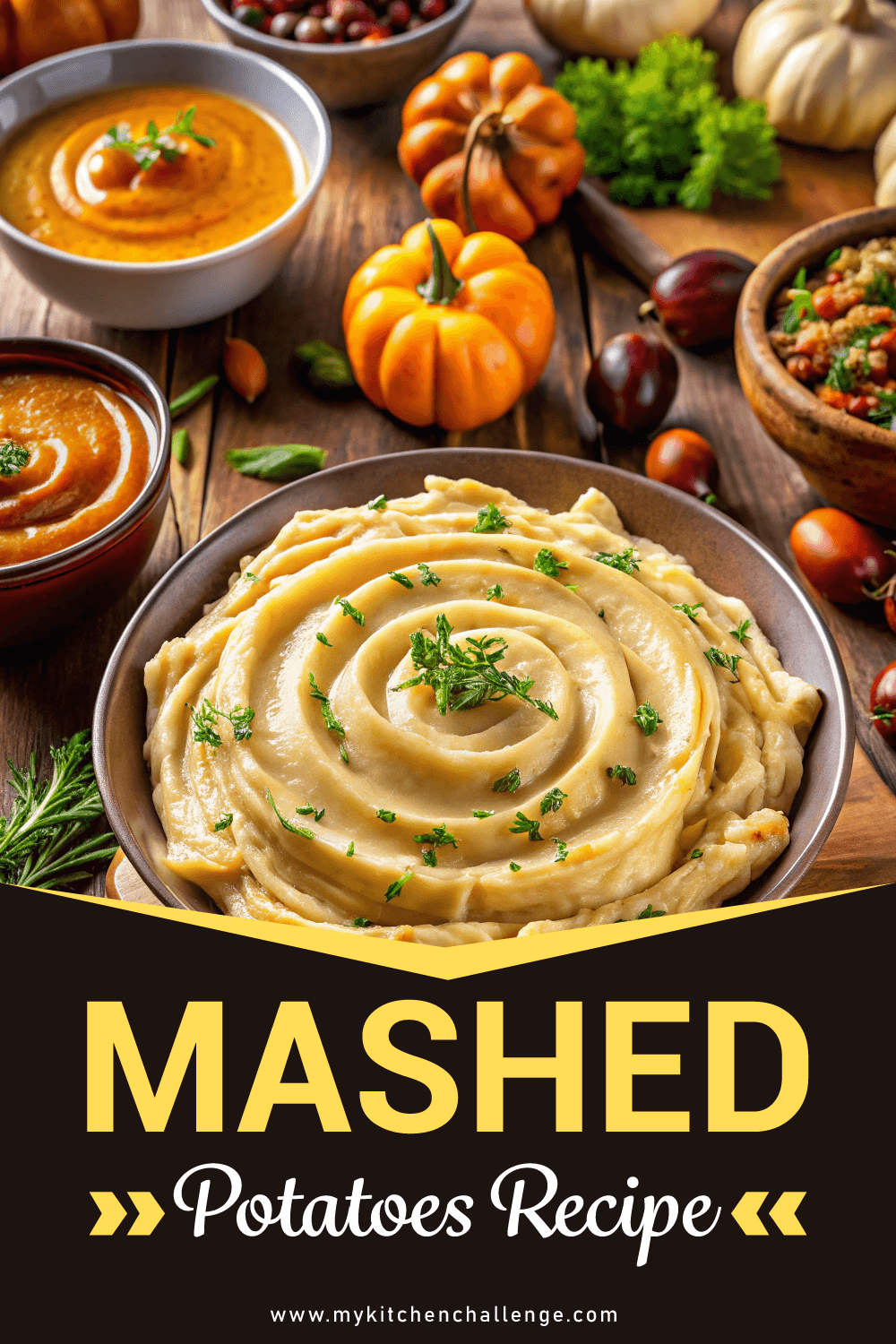
Final Scoop: Why You Need These Mashed Potatoes in Your Life
So here’s the deal. These mashed potatoes aren’t just a side dish. They’re the dish. The one that steals the show on your plate, makes your kitchen smell like heaven, and gets devoured in seconds. Whether it’s a chill weeknight dinner or a full-on holiday feast, this recipe never misses.
They’re simple to make, endlessly customizable, and packed with creamy, buttery goodness that hits all the right comfort food notes. And let’s be real—everyone could use a little more comfort.
So go ahead, bookmark this. Share it with your carb-loving bestie. Make it for your next dinner. Just don’t be surprised if people start asking for seconds before you’ve even sat down.

